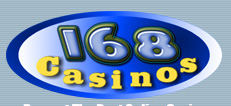Slot Machine: Technology: Near-miss programming
Near-miss programming
Because the reel display of modern slot machines is controlled by computer software, it is possible to make the slot machine frequently display combinations that are close to winning combinations. For instance, if the jackpot combination is "7-7-7", a slot machine could be programmed to frequently display "7-7-(non-7)". This can fool the player into thinking they "almost won", teasing them into playing more often.
This practice of showing combinations that are similar to winning combinations more frequently than would occur randomly is called "near-miss" programming. It has been ruled illegal in the U.S. states of Nevada and New Jersey. The Nevada Gaming Commission did review some machines with this type of programming and refused to authorize them.
There is a related phenomenon that is also sometimes called "near-miss". The chance of a winning combination appearing on a payline is controlled by the winning percentages programmed into the slot machine. However, the combinations appearing above and below the payline are all roughly equally randomly distributed. This means it is much more likely that a "winning combination" will appear above or below a payline than on the payline. Using the same example above, it is much more likely that a "winning combination" of "7-7-7" would appear on a line above or below the payline than the chance that it would appear on the payline. This phenomenon only occurs where abbreviated physical reels are used to display a win pattern based upon the RNG. In Video Slot Machines, virtual reels are used and the symbols that appear around the winning line are usually an accurate depiction of how the reels were mathematically modeled.
The issue of a near-miss above or below the payline was also investigated by the Nevada Gaming Commission. They ruled that this was legal, so long as the "near-miss" above or below the payline was not specially programmed. In other words, the "near-miss" must be just as likely to occur as any other combination. The machine cannot be specially programmed to show "winning combinations" more frequently than other combinations above or below the payline.
The calculation is more complicated than implied here. The stops are not 'programmed' in the sense that their outcome is the result of a calculation. In fact, the reel strips (like a mechanical poker machine) are designed so that the machine will pay according to the relevant RTP.
Near-miss programming, where a near miss is inaccurately displayed (i.e. the player is shown something that is not an accurate representation of the reelstrips) is not allowed in Australia either. Due to this, regulators use stop motion cameras to audit manufacturer's practices.
From Wikipedia's
Contents - Slot Machine |
